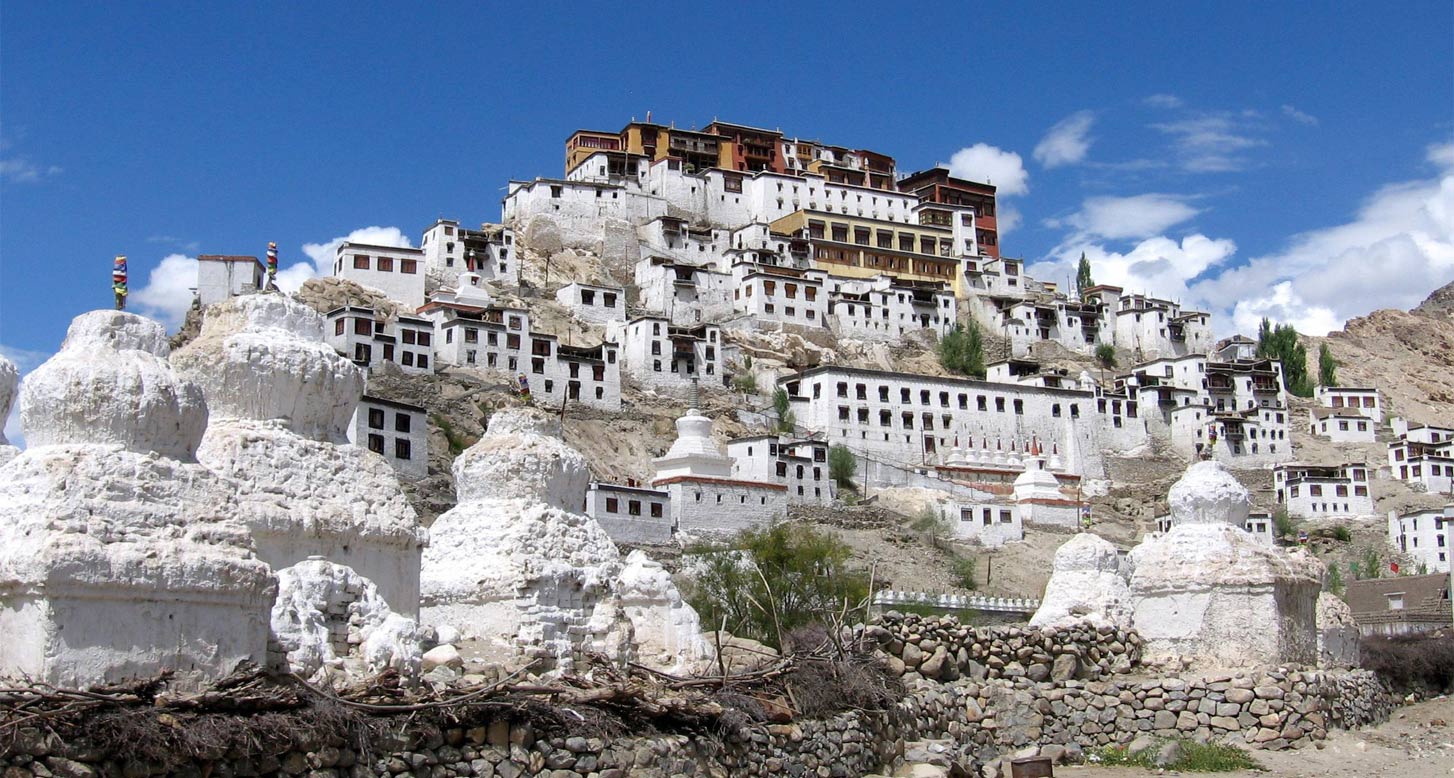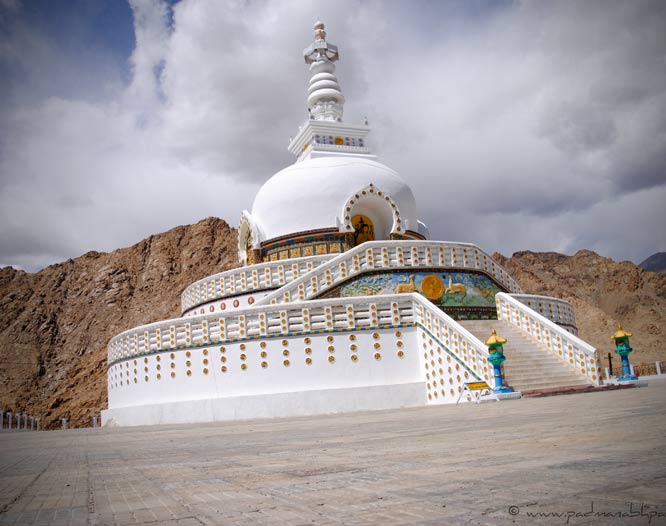
Days
Highlights: Explore Old Delhi
Description: On arrival at Delhi airport, on completion with immigration, custom clearance and luggage collection please proceed to the exit look for representative in the arrival lounge- who will be holding a placard with guests name and later you will be given a traditional Indian welcome and escorted to your hotel. (Check in time 1400 hrs). Delhi is India's bustling capital city. New Delhi reflects the legacy the British left behind. The division between New and Old Delhi is the segregation between the capitals of the British and the Mughal respectively. This day will be spent at leisure to get acclimated to the time difference. In afternoon go for guided Old Delhi sightseeing including metro ride. Enjoy a cycle rickshaw ride through the famous Chandni Chowk Bazaars, once the shopping avenue for Mughal royalty and the oldest marketplace of the city, once the shopping avenue for Mughal royalty and the oldest marketplace of the city. Drive past the Red sandstone walled Red Fort, also built by Emperor Shahjahan. Next proceed to visit Raj Ghat, the cremation ground of Mahatma Gandhi), The "Father of the nation".
Locations: Delhi
Highlights:
Description: Today morning, you will be transferred to airport for flight to Leh. Upon arrival at airport you are met outside the arrival hall by our representative holding a signage with your name. He will escort you to your vehicle and assist with transfer and check-in formalities at your hotel. (Check-in time 12 noon) It is recommended that there should be no activity on first day of arrival as this enables the guest/s to have an optimal relaxation before they acclimatize to rarefied oxygen level in this high-altitude region ensconced in the high Himalayan plateau. Leh was the capital of the Himalayan kingdom of Ladakh, now the Leh district in the Indian state of Jammu and Kashmir. The town is dominated by the ruined Leh Palace, the former mansion of the royal family of Ladakh, built in the same style and about the same time as the Potala Palace-the chief residence of the Dalai Lama until the 14th Dalai Lama fled to Dharamshala, India, during the 1959 Tibetan uprising.
Locations: Leh
Highlights: Explore Leh
Description: Following breakfast, you will proceed for a guided tour of Leh. We start with a visit to Shey Palace. This, the old summer Palace of the kings of Ladakh, was built more than 550 years ago by Lhachen Palgyigon, the king of Ladakh. We continue to the 500 year old Thiksey monastery, perched on a hill high above the Indus; the Monastery has about 100 yellow cap monks. On the right of the entrance to the main courtyard, a new chapel houses an enormous 15m high seated Buddha. Morning Prayer can be witnessed around 6 am, but happily there are also prayers closer to noon, preceded by long mournful sounds from the horns on the roof. The monastery hill is best ascended on foot although there is also a new road up to the monastery. The temple of Zan-la is beside the car parking area on this road. You will visit next Hemis Gompa, the wealthiest, best known and biggest Gompa of Ladakh. Its popularity stems from the major annual festival held here in summer. The festival is in honor of Guru Padma Sambhav's birth anniversary. It also has the largest Thanka in Ladakh, which is unfurled once in 12 years. Hemis was built in 1630 during the reign of Sengge Namgyal, an illustrious ruler of Ladakh. It flourished under the Namgyal dynasty for royalty favoured the Drugkpa Sect, which managed the monastery. The verandahs have a surfeit of frescoes, among them the Buddhist Wheel of Life (the Kalachakra) as well as numerous rows of prayer wheels. In the afternoon you will return to Leh and the rest of the day is free to wander the streets of the bazaar.
Locations:
Highlights: Explore Alchi
Description: After breakfast, drive to Alchi. En-route you will stop at Phyang Gompa, Basgo Gompa, certainly the most impressive of Ladakhi citadels despite its ruined state. From here we drive to Likir Gompa; this Monastery is situated some 50 km from Leh, just off the Leh-Srinagar highway. It was built in 1065, but a new addition to the monastery was made in 1999: a 23 metre tall statue made of gilded gold of the Maitreya (the future Buddha) in a sitting posture on the roof. Our next stop is at Saspul village. Here there are some amazing rock-cut temples. Four of these caves are richly adorned with painting from the 13th to 15th century. The caves are located in a cliff towering to the south-west of the village. On the top of this rock there are remnants of an ancient fort. We continue to Alchi Monastery around 67 km from Leh. A small village, Alchi is home to one of the oldest monasteries in Ladakh. Standing on the banks of the River Indus, Alchi Monastery's oldest monuments preserved here date back to the middle of the 12th century. Check in at your hotel.
Locations: Alchi
Highlights: Explore Alchi
Description: After breakfast at the hotel, drive back to Leh en-route visiting Rizong Monastery. Founded by the great Lama, Tsultim Nima in the year 1831, the Rizong Monastery belongs to the Gelukpa order. Monasteries are also great seats of learning and the Monastery educates a number of monks. A number of shrines are located within the Monastery and a rich collection of scriptures, texts and biographies of great Lamas like Tsultim Nima are preserved here. Some 2 kms away is a nunnery, known as Chulichan (Chomoling); a few nuns reside here under the governance of the Rizong Monastery. The nuns or the Chomos, worship at the temples of the monastery and perform chores like milking, spinning wool and getting oil for the temple lamps. Check in at your hotel.
Locations: Leh
Highlights: Explore Sarchu
Description: After breakfast, your will drive to Sarchu. Cross the Tanglang Pass, which is at an altitude of 5328 metres, and the highest point of our journey. We descend then to the highest plateau on earth (4511m) before descending the Gata Loops, an amazing series of 21 hair-pin bends. Check in at your tented camp.
Locations: Sarchu
Highlights: Explore Jispa
Description: After breakfast, your will drive to Jispa. Drive through Kalung Sarai to the top of the Baralacha La, which at 4890 metres is one of the most dangerous passes on our journey from Leh. And at the top of Barachala La, with its views over the Himalayas, is Lake Suraj Tai, the source of the River Bhaga. From here we thread our way down to Jespa, a small settlement in an area known as Lahul. We start to see an increase in the vegetation on the mountain slopes as we leave the barren landscape of Ladakh behind and begin to encounter signs of cultivated land, before we reach our nightstop at Jespa. There is a new Monastery here, on the left bank of the River Braga, built to commemorate the 18th Kalachkra initiation by His Holiness the Dalai Lama. Cross the Tanglang Pass, which is at an altitude of 5328 metres, and the highest point of our journey. We descend then to the highest plateau on earth (4511m) before descending the Gata Loops, an amazing series of 21 hair-pin bends. Check in at your hotel.
Locations: Jispa
Highlights:
Description: After breakfast, you will drive to Manali. Drive to Manali takes you to the Rohtang Pass, lying at 3977metres; the last of the high passes. Then you will descend to the Kulu Valley and the picturesque town of Manali, lying in Himachal Pradesh, surrounded by forests and mountains. Its major asset is its proximity to the snowline. Manali is the ultimate tourist destination for the adventure sports enthusiast: trekking, mountaineering, rafting, skiing, heli-skiing are all found here. Check in at your hotel.
Locations: Manali
Highlights: Explore Manali
Description: After breakfast, proceed for a guided tour of Manali. Visit Hadimba Temple; the town has many attractions but the chief centre of interest, historically and archeologically, is undoubtedly the Dhoongri Temple, dedicated to the goddess Hadimba, the Bhim of Mahabharat fame. It has a four-tiered Pagoda shaped roof, and the doorway is carved with legendary figures and symbols. This temple is located amidst a forest of deodar trees in the centre of town. The complex was built in 1533. A few kilometres out of town is the Vashist Temple, in a small village located on the left bank of the River Beas, which is worth a visit; the village is renowned for its hot springs and temples. Nearby is the pyramidal stone temple dedicated to Vashist Muni. There is another Temple to Lord Ram here. The natural hot sulphur springs with two separate bathing tanks for gentlemen and ladies are always full of tourists. Hot water from the nearby spring is provided for bathing.
Locations: Manali
Highlights:
Description: After breakfast you will drive to Dharamshala. Dharamshala is the principal township of Kangra district and overlooks wide spread of the plains. With dense pine and deodar forests, numerous streams, cool healthy air, attractive surroundings and the nearby snowline, Dharamsala has everything for a perfect holiday. It is full of life and yet peaceful. The headquarters of His Holiness the Dalai Lama are at upper Dharamsala. Covering a wide area in the form of twin settlement, lower Dharamsala (1380m) is a busy commercial centre. While upper Dharamsala (1830m) with the suburbs of Mcleodganj and Forsytheganj, retains a British flavor and colonial lifestyle. The charming church of St. John in the wilderness is situated here and this is the final resting place of Lord Elgin, a British Viceroy of India during the 19th century. There is also a large Tibetan community who have made this place their home. Numerous ancient temples like Jwalamukhi, Brijeshwari and Chamunda lie on the plains below Dharamsala. Check in at your hotel.
Locations: Dharamsala
Highlights: Explore Dharamsala
Description: After breakfast, enjoy a guided tour of the city. Tour of Dharamshala includes an orientation walk with a visit to the Church of St. John in the Wilderness, the Buddhist Namygal Monastery, known locally as Little Lhasa, and the Kalachakra Temple. 500 metres above Lower Dharamsala is the village of Mcleodganj, the area with the most Tibetan influence and the village in which lies the residence of his holiness the Dalai Lama. If the Dalai Lama is giving one of his public audiences we may be granted permission to attend. The Kangra museum is worth a visit; it gives an overview of the rich past of the region, and there are other institutes that have been established to preserve the Tibetan art, cultures and traditions.
Locations: Dharamsala
Highlights: Explore Amritsar
Description: After breakfast drive to Amritsar. Amritsar, the name of the city derives from the name of the pool around the Golden Temple (also known as Harmandir Sahib) and means "holy pool of nectar" (Amrit: elixir; Sar: (short for sarovar) lake). It is the spiritual and cultural centre of the Sikh religion, and they are rightfully very proud of the city and their very beautiful and unique Gurdwara (place of worship). The Golden Temple was initiated by Guru Ramdaas Ji, the fourth Sikh Guru, and completed in 1601 by his successor Guru Arjan Dev Ji. It is now a major pilgrimage and tourism hub. Check in at the hotel. Afternoon, one may wish to be the part of flag lowering ceremony at Wagah Border. Wagah is a village situated near a road border crossing, goods transit terminal and a railway station between Pakistan and India, and lies on the Grand Trunk Road between the cities of Amritsar, Punjab, India, and Lahore, Punjab, Pakistan. While returning back to the hotel from the border, you will visit Golden Temple for the night ceremony.
Locations: Amritsar
Highlights: Explore Amritsar
Description: After breakfast, you will explore the city. Visit Golden Temple at first followed by Jallianwala Bagh which holds the tragedy of the massacre beneath. The 1919 Amritsar massacre, known alternatively as the Jallianwala Bagh massacre after the Jallianwala Bagh (Garden) in the northern Indian city of Amritsar, was ordered by General R.E.H. Dyer. On Sunday April 13, 1919, which happened to be 'Baisakhi', one of Punjab's largest religious festivals, fifty British Indian Army soldiers, commanded by Brigadier-General Reginald Dyer, began shooting at an unarmed gathering of men, women, and children without warning. Dyer marched his fifty riflemen to a raised bank and ordered them to kneel and fire. Dyer ordered soldiers to reload their rifles several times and they were ordered to shoot to kill. Official British Raj sources estimated the fatalities at 379, and with 1,100 wounded. Civil Surgeon Dr Williams DeeMeddy indicated that there were 1,526 casualties. However, the casualty number quoted by the Indian National Congress was more than 1,500, with roughly 1,000 killed. This evening you will board your train Swarna Shatabdi to Delhi. On arrival at Delhi, you will be transferred to hotel.
Locations: Amritsar
Highlights:
Description: Morning breakfast and later transfer to airport to board flight to back home.
Meals: None Included
Locations:
The Tour Includes :
- • Accommodation on twin sharing basis as per the itinerary in hotels mentioned or similar for 13 days/12 nights with meals as indicated. • Transport services for necessary transfer and city tour using air-conditioned Vehicle. • Meet and greet services by Eastbound/Associate office in all cities. • Accompanying English speaking escort for city tour/excursions. • Train tickets for Amritsar to Delhi by Shatabdi in AC Chair Class. • Entrance fees (single entry) • All currently applicable taxes
- • International / Domestic airfares, insurance, visa fees. • Lunches and dinners except for one mentioned in itinerary. • Surcharge payable in case alternate hotels, or a higher category of rooms are confirmed • Porterage at railway station, airports and hotels. • Any optional tours mentioned in itinerary. • Expenses of a personal nature such as drinks, laundry, telephone calls,, camera fees, excess baggage, emergency/medical costs • Tips to drivers, guides and hotel staff • Any services not mentioned above • Any other expense/changes due to unforeseen circumstances while in India • Any increase in costs beyond our control such as fuel and airfare increases, additional government levies and taxes, etc



 +91 9810031654
+91 9810031654

